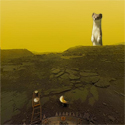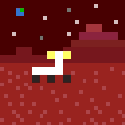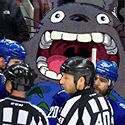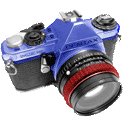|
Trampus posted:I know this isn't exactly what this thread is for but I'm hoping you guys can help me out with my telescope. I have an 8" dob that I use in the Phoenix area and due to light pollution and laziness, I really only look at the planets and Orion's Nebula. I'm taking it on a road trip with me to the middle of nowhere in Missouri this week and would love to take advantage of the dark skies there. Can someone recommend a good cheat sheet or guide for finding stuff in the Summer sky? Amateur astronomy thread- that's pretty much exactly what this thread is for! The summer sky is just as interesting if not more so than the winter sky, IMO. You've got the huge clusterfuck of galaxies in Virgo, some really nice galaxies in the Ursa Major/CVn area, the summer Milky Way rising in the east if you wait around for it, fucktons of nebulae and star clusters... My personal favorites that you should try for:
For finding them, I'd suggest Stellarium, probably my favorite free astronomy program. For bonus points, check http://heavens-above.com/ for ISS passes, Iridium flares,other satellite passes, and other fun things like that.
|
|
|
|

|
| # ? May 28, 2024 19:07 |
|
Luneshot posted:Words of awesomeness! Thanks, this is exactly what I was looking for. Even if I can only find a third of the stuff you suggested I'll be happy. Thanks again.
|
|
|
|
Trampus posted:Thanks, this is exactly what I was looking for. Even if I can only find a third of the stuff you suggested I'll be happy. Thanks again. No problem, be sure to keep an observing log so you can write down the stuff you did manage to see! A lot of those objects are fairly easy to find by star hopping or even just guesstimating by looking for bright stars nearby, so once you start remembering where stuff is you'll be able to find it in no time.
|
|
|
|
Cross-posting from the Spaceflight thread, since that's where this discussion started. I think we're kind of drifting away from the main theme of that thread, and here would probably be a more appropriate place to talk about it. A couple weeks ago, I started playing around with pictures taken by spacecraft. My interest was in finding pictures that had never really been processed for public consumption, like incomplete mosaics or pictures taken as part of an imaging campaign (which led to a really cool animated gif of Venus"s clouds in motion). I started a tumblr page to post the stuff I found. Anyway, I've been thinking about other "hidden treasure" type stuff and have started learning about processing Hubble and other observatory images. I was lamenting some of the difficulties involved and that most of Hubble's backlog of pictures had mostly been picked over. (Luneshot, you had a great post about this, could you cross-post that here?) This evening I discovered a collection of digitized plates from Heidelberg, Germany, that was available online. There's thousands of old photographs, and a lot of them were of long-forgotten comets. I have a soft spot for comets, and it seems like perfect material to work with. I thought I'd share my initial foray into the collection:  This picture is 112 years old. I've done a quick clean-up job on it, but I think I lost a lot of detail in the tail in trying to remove the background noise. I don't know if there's anyone here that's old enough to have worked with film astrophotography, but if there are...any tips?
|
|
|
|
For future use: Turn Left at Orion
|
|
|
|
So, I found a picture of Comet Holmes in 1892. Usually faint, well beyond the limits of visual observation through even a telescope, it suddenly rocketed to naked eye visibility, where it was discovered by British astronomer Edwin Holmes. The only picture I've ever seen of it from its discovery outburst is a print (dated November 10, 1892, four days after the outburst) that appeared in a book by E.E. Barnard, himself a keen comet hunter. That picture is further down the wiki page, and it's not particularly good - the comet looks over-exposed and not a lot of detail is visible. I think that can be explained in part because the in the early phase of the outburst, if the 2007 repeat is anything to go by, a thick, featureless dust cloud shrouded the comet. Over time, it thinned as it expanded, creating a view more like that seen as the main picture for the comet. So back to the picture I found. It's from the Heidelberg-Konigstuhl collection, dated November 19, or 13 days after the outburst began. Since I can play with the scanned plate digitally, I can bring out more detail than was possible when Barnard's print was originally made.  There's a bit more visible detail in the comet. You can see a more normal dust tail inside the spherical cloud of dust thrown off by the outburst, and if you look carefully there might be a hint of a fainter coma surrounding it all.
|
|
|
|
These are great, keep them coming. For some reason, I find the idea of taking pictures that nobody has looked at seriously in over a hundred years and applying modern computer imaging techniques to reveal more detail very clever. I'm surprised I've not heard of anybody doing this before.
|
|
|
|
AFAIK, the main interest in digitizing plates has been in harvesting 100 years of variable star data. A worthy cause, if a little boring. Comets are seen more as a historical curiosity at the moment. Most exposures are single-color, which doesn't tell scientists much about gas and dust production, or when certain volatiles "turn on" and vaporize in the Sun's heat. There's a spacecraft, Rosetta, currently about to drop into orbit around a comet to investigate these things. Offhand, the only scientific value I can see in them might be to heliophysicists, who could use them to gauge the speed of the solar wind pre-Space Age. Even then the data might be so patchy as to be useless. Still, it's fun to go through and find stuff that hasn't been looked at seriously in decades.
|
|
|
|
I may have to take a few of these into Pixinsight and see what can be done, it's certainly an interesting idea for a project.
|
|
|
|
 Full Moon by RottenCookies, on Flickr I used a 300mm lens with a 2x teleconverter on my DSLR. I had to stop the lens down a fair bit, and kept the shutter kind of short to keep any camera shake from happening (I don't have a tripod anymore so I didn't have that option.)
|
|
|
|
I'm just starting out with astrophotography and as long as we are sharing moon pics here is one I got on Saturday night. Gear used: Celestron 114gt Nikon d3100 with a t-adapter with a 2x barlow.  I did a 1/25 exposure with ISO set to 100 with a moon filter and auto white balance.
|
|
|
|
I've never gone stargazing before but I've recently been really interesting in checking out some good places around my area to go see some stars. I live in Vancouver and I was recommended this place called Hart's Pass / Slate's Peak over in WA state. I've been planning on going around July 28th since there will be a new moon. Is this a good idea or even a good place to view the stars? I assume that the weather will be good and since there will be no moon, the stars will be out in full force. Thank you!
|
|
|
|
Busy Bee posted:I've never gone stargazing before but I've recently been really interesting in checking out some good places around my area to go see some stars. http://www.jshine.net/astronomy/dark_sky/index.php?lat=48.48553820902847&lng=-119.42147460937497&zoom=8&pollution=true&selected_id=1 According to this on Dark Sky Finder, you should be in a fantastic spot that has minimal light pollution. http://cleardarksky.com/c/WnthrpWAkey.html?1 This site will let you get a heads up on how clear the skies will be on that night. (There's a checkbox on the left that will let you see the legend for all the colors and whatnot.) It seems to me like you'll be in a great spot. I can recommend you pick up a pair of binoculars beforehand and you will really be amazed at what the lil things can do. 10x50 binoculars can be had as cheap as $20 and they'll probably work fine for you if you know how to keep the eyepieces focused. I've been stargazing for the past 2 years with just a pair of binoculars and in the past 6 months a dslr with a crappy telephoto lens. And I live in a suburb of NYC, so there's a fuckton of light pollution here, but the binoculars have served very well. Rotten Cookies fucked around with this message at 19:09 on Jul 16, 2014 |
|
|
|
If you use binoculars, it might be worth it to get a tripod. Your mileage may vary, though. Some people can use them with no problems, but my hands are so shaky that it's literally impossible for me to see anything through binoculars.
|
|
|
|
Is there anywhere online that will rent out a telescope? I live in horribly light-polluted area, but am going camping in a very dark place in a few weeks. I really just want a telescope for the weekend. Alternatively, what sub-$200 scope would you recommend for a beginner? I have binoculars already.
|
|
|
|
Luneshot posted:No problem, be sure to keep an observing log so you can write down the stuff you did manage to see! A lot of those objects are fairly easy to find by star hopping or even just guesstimating by looking for bright stars nearby, so once you start remembering where stuff is you'll be able to find it in no time. I wanted to follow up and tell you the telescope was a big hit with my family. Many of them had never looked at the moon or Saturn through a telescope and many minds were blown. Unfortunately, I wasn't able to locate any Messier objects =( I tried using the SkyMap app on my phone to find the general locations but when you have a line of impatient people waiting to see something, five minutes is forever. I'm going to take the time and practice finding things from home before I take the scope out in the public again. Thanks again for the list of objects, I'm going to start working my way down the list.
|
|
|
|
Trampus posted:I wanted to follow up and tell you the telescope was a big hit with my family. Many of them had never looked at the moon or Saturn through a telescope and many minds were blown. Unfortunately, I wasn't able to locate any Messier objects =( I tried using the SkyMap app on my phone to find the general locations but when you have a line of impatient people waiting to see something, five minutes is forever. I'm going to take the time and practice finding things from home before I take the scope out in the public again. Glad to help! Saturn is always an instant crowd-pleaser and usually the one that makes the most impact- most people aren't quite as interested in looking at a fuzzy blob, no matter what that fuzzy blob is. If you're familiar with the constellations/asterisms, it's much easier to find Messier objects. On some clear nights, it's worth it to go out without the telescope and with a planisphere/star charts and just try to identify bright stars and constellations- soon enough you'll be able to find stuff without even trying. For example, M57 is nearly exactly halfway between two of the bright stars in Lyra. M13 is located in the "armpit" of Hercules. The Lagoon Nebula (M8) is above the "spout" of the Sagittarius teapot. M51 is below the last star in the handle of the Big Dipper/Ursa Major. Once you get a good handle on where objects are in relation to bright stars or constellations, you can usually find them in less than a minute.
|
|
|
|
I usually hate pulling out my telescope during the summer, since it's almost always wicked humid and hazy. Had a front blow through today with some fresh air, though, and the skies were pretty clear, so I figured I'd go for it. It's probably been two or three years since I'd checked out the summer sky, and I'm surprised how quickly my muscle memory got me where I wanted to go. I just kind of wandered around. Started at M13, then hopped over to M57. I'd really forgotten how small it was. Just this little smoke ring hanging in the heavens. I jumped over to the 52 Cygni to check out the Veil Nebula before remembering I had an OIII filter. That really changed the view. I was able to follow the nebula almost a full degree. Sharp, thin wisp that trailed by 52 Cygni and then split into two finer wisps. Encouraged, I just started sweeping the area, picking up a few little wisps here and there before stumbling on the brighter segment (I forget the number) that's up on the arm of Cygnus. That one I was able to follow nearly two degrees. The amount of detail was amazing - wisps, kinks, little blobs. I wish I was able to photograph it as I saw it. After that I moved onto the Dumbbell Nebula (M27?), looked at that for a few moments, and took out the OIII filter. Hopped down to Sagitta to check out M72. Before packing it in for the night I went down to check out M8. I was having a hard time finding it in the skyglow (it was over a city about 30 miles distant) so I popped in the OIII filter again and started sweeping. Ended up stumbling over the Swan Nebula (M17?) instead. I saw the checkmark shape of the nebula pretty clearly, embedded in a dim haze that extended nearly half a degree. After checking that out I resumed my sweep, but found M8 just as it was setting behind a tree. So I guess I'll have to leave that for another night. As I was packing up I noticed my eyes were so well adjusted to the dark that looking at the skyglow near the horizons was almost uncomfortably bright. All said it was a pretty fantastic night and I wish the weather would cooperate more often.
|
|
|
|
Got the scope out last night as well, mostly just to look at Saturn and blurry red Mars, though I did look at the Ring nebula for a while too before the neighbor decided it was a good time to work in the garage and turned on all his lights. Quick question on eyepieces. I have an XT8 dob, and my shortest eyepiece is 12.5mm, as well as a 2x barlow. I also wear glasses - is that about the most magnification I can hope to get out of my scope/eye situation? When I was researching high magnification eyepieces previously, I went with the 12.5mm since it was also "long eye relief", and easier to use with glasses. I usually don't have much problem seeing the whole field of view... Also not sure how much more magnification I can use on an 8" scope... I guess the planets are nice but I just want bigger 
|
|
|
|
After getting the funds together for that $150 10" telescope on Craigslist, I found out the dude had already sold it and didn't know how to take down a posting.  Binoculars again for the foreseeable future, I guess. Binoculars again for the foreseeable future, I guess.It's been kind of crap weather here, so it's been no fun. Rotten Cookies fucked around with this message at 17:06 on Jul 24, 2014 |
|
|
|
Finally got a chance to play with the iOptron Skytracker I bought from fellow goon Mr. Despair. Does the world really need more Milky Way pictures?  Deneb, The Veil  Andromeda, low in the sky  A couple more (and other space pictures I've taken) here: https://www.flickr.com/photos/habilis/with/14755133804/
|
|
|
|
Wow, those are pretty great. I'm a fair bit jealous.
|
|
|
|
Just got back from doing an astronomy tour and presentation for a LDS scouting group, which ended up being pretty awesome. Out of about 30 people, half of them ended up staying up all the way to 1am and seemed to have a great time. I don't think there was a point where I wasn't answering questions and/or nerding out about cosmology, and both the kids and the adults were genuinely interested in finding stuff with the supplied planispheres and getting the scope on-target. Tons of mosquitoes too, so you could tell they were determined to actually give observational astronomy a try. I'm pretty sure my favorite part about astronomy is using it to get people pumped about learning new things. A good third of the night wasn't even looking at the sky, but rather talking about basic physics class stuff like stellar evolution and nucleosynthesis, the electromagnetic spectrum, gravity, etc. It was so friggin' cool to hear an elementary school kid explain planet hunting with doppler spectroscopy to one of the scout master dudes after going over the doppler effect earlier when someone asked what redshift and blueshift were (Then showing them M31 as an example of something that's blueshifting). Even though I can put on a good show, I'm still pretty much a beginner when it comes to observational astronomy, and I really want to get better at it so I can do this kind of thing more often.
|
|
|
|
Been thinking about getting a telescope for sometime now and will probably pick something up off Craigslist for around $100 to get my feet wet. Hopefully something motorized as I would like to learn how to take pictures as well. Are either of these worth the money? Anything in particular to watch out for? Meade DS-114ATA - $75 http://chicago.craigslist.org/chc/ele/4574909146.html Celestron Nexstar 114GT 114mm Computerized Reflector Telescope - $100 http://chicago.craigslist.org/wcl/ele/4598010489.html
|
|
|
|
lunatikfringe posted:Been thinking about getting a telescope for sometime now and will probably pick something up off Craigslist for around $100 to get my feet wet. Hopefully something motorized as I would like to learn how to take pictures as well. Are either of these worth the money? Anything in particular to watch out for? Neither of those prices are that bad for a 114mm telescope. Be prepared to buy an extra eyepiece to go with that Celestron if you want to see better than 100x. Also, on the off chance that you live in the southern hemisphere, make sure that those mounts don't just pretend your latitude is the equator. By the way, many people think refractors are better than reflectors for astrophotography (though some people think reflectors are better for photography because they are less likely to produce chromatic aberration). I'm hardly an expert, just something to keep in mind. You'll probably want to get a camera mount too. Either a T ring for a DSLR or universal mount for a point and shoot.
|
|
|
|
Vladimir Poutine posted:Neither of those prices are that bad for a 114mm telescope. Be prepared to buy an extra eyepiece to go with that Celestron if you want to see better than 100x. Also, on the off chance that you live in the southern hemisphere, make sure that those mounts don't just pretend your latitude is the equator. lunatikfringe posted:Been thinking about getting a telescope for sometime now and will probably pick something up off Craigslist for around $100 to get my feet wet. Hopefully something motorized as I would like to learn how to take pictures as well. Are either of these worth the money? Anything in particular to watch out for? I have the Celestron 114gt and it's pretty cool but don't expect to use it for long exposure photography. It's an alt-az mount so anything longer than 7 seconds is going to have movement, ruining the shot. Great for planetary photography though.
|
|
|
|
GutBomb posted:I'm just starting out with astrophotography and as long as we are sharing moon pics here is one I got on Saturday night. I found that I need faster than 1/25 for the moon. It actually moved fairly quickly.
|
|
|
|
Just checked my journal, tonight was the first night I've been out with my scope since August 12 2013. Jeezus.  My excuse is valid though: our Manitoba winter was utter poo poo, our spring was almost worse, most of the summer it was either too humid, too many mosquitoes (which means opening ZERO doors at night) or it was raining. Tonight it was humid but no bugs. Mostly it was an excuse to try out a cheapo foldable camping table I bought from Canadian Tire for $35. Works great! Nice to have a solid surface to place my iPad and But man oh man do I need an observing chair. My back is killing me right now. Was worth it to get outside again, though. Binoculars are great but I like the view from a 26mm Nagler more.
|
|
|
|
My dad just gave me an old telescope of his. I think it's this one. It looks like it has a Meade 25mm eyepiece on it giving me 36x magnification? It currently has no finder scope on it, so it's hard to get a good look at anything other than the moon. It's also on a completely manual tripod. Is it worth finding a finder scope and maybe some different objective lenses to see of this is something my wife and I could get into? If so do you folks have any recommendations on a good inexpensive finder scope and any other worthwhile accessories? Thanks 
|
|
|
|
So my wife managed to borrow, long term from her school, what I believe is a Celestron Super C8 Plus. It's on a Celestron-Byers worm gear drive motorized mount, and that's the only identifiable piece I can see that's Googleable. Few questions for you guys: We finally got an opportunity to use it last night to see Mars, the Moon and Saturn all right next to each other. Problem is, the finder scope seems to be mis-aligned. There's no crosshairs in the center so I'm leaning as directly over it as I can to get the straightest angle but even so I need to have something like the Moon way off to the side to get it in the scopes eyepiece. Most of the time it was a matter of guessing a position in the finderscope and then trying to noodle around with the dials to compensate for the two being misaligned. Is there a general way for re-aligning the finder or will I have to dig up the scopes manual? Another problem was that (and this is probably me just being super amateur that hasn't touched a scope in 10 years) while dialing it around to find whatever I had in the finderscope it was touchy as hell. Locking it into a position would normally knock it fairly out of whack from whatever I had it positioned on. The Moon was easy becasue it's enormous in this scope, but I got Saturn twice by pure luck and Mars only briefly. Should I look at something that could possibly be tightened or do I just need to practice and learn to be more gentle with it? It's an old scope so who knows what condition it's in. The eyepiece was loose as poo poo when I started with it, which tightening that helped a lot with the jankiness. Lastly, I didn't plug it in because i was having a hard time figuring out how to aim the mount when properly aligned with Polaris and decided to just flip it around and point directly (woo!). If I have the equatorial mount pointed at Polaris, and set the angle of the mount to my latitude (I'm in Skokie IL so ~42 degrees?), will even planetary observing stay within the eyepiece once it's aimed properly? It makes sense that stars and other distant objects would stay put since they're moving way more slowly relative to the earth, but I would figure the planets and Moon are moving quite a bit faster.
|
|
|
|
Armacham posted:My dad just gave me an old telescope of his. I think it's this one. It looks like it has a Meade 25mm eyepiece on it giving me 36x magnification? It currently has no finder scope on it, so it's hard to get a good look at anything other than the moon. It's also on a completely manual tripod. Yeah, it's totally worth getting a finder scope for that, but if you only have a 36x eyepiece you should get a higher magnification eyepiece before you bother getting one since 36x will render planets as little more than minute disks. That telescope has a highest useful magnification of 200x, so I'd recommend a 5mm eyepiece that gives you 180x and something in middle as well like an 8mm eyepiece which would get you 112x. Both those eyepieces will give you a pretty interesting look at surface of the moon, in addition to the 5 planets you can see with the naked eye. I can't really recommend a specific finderscope but don't worry about getting one with high quality optics or anything, just make sure it has cross-hairs and can be attached to your telescope. The combination of a finderscope and those two eyepieces will be $100-150ish so if that's too much maybe just start off with an eyepiece and do some lunar viewing. To properly align a finderscope you'll probably need to set it up during the day and point your telescope at a distant streetlight or building.
|
|
|
|
Does anyone have tips for RegiStax 5.1? I have about 1400 frames of Saturn and I have no idea what to do with them other than fiddle with the sliders and such and pretend to know what I'm doing
|
|
|
|
Vladimir Poutine posted:Yeah, it's totally worth getting a finder scope for that, but if you only have a 36x eyepiece you should get a higher magnification eyepiece before you bother getting one since 36x will render planets as little more than minute disks. That telescope has a highest useful magnification of 200x, so I'd recommend a 5mm eyepiece that gives you 180x and something in middle as well like an 8mm eyepiece which would get you 112x. Both those eyepieces will give you a pretty interesting look at surface of the moon, in addition to the 5 planets you can see with the naked eye. I can't really recommend a specific finderscope but don't worry about getting one with high quality optics or anything, just make sure it has cross-hairs and can be attached to your telescope. The combination of a finderscope and those two eyepieces will be $100-150ish so if that's too much maybe just start off with an eyepiece and do some lunar viewing. To properly align a finderscope you'll probably need to set it up during the day and point your telescope at a distant streetlight or building. Thanks for the info. However I got impatient and I ended up grabbing a few things for the scope before I read your post  Finder Scope: http://www.amazon.com/gp/product/B0000XMVDG/ref=oh_aui_detailpage_o02_s00?ie=UTF8&psc=1 2x Barlow Lens: http://www.amazon.com/gp/product/B0000XMWQW/ref=oh_aui_detailpage_o02_s00?ie=UTF8&psc=1 9mm eyepiece: http://www.amazon.com/gp/product/B0000XMXY8/ref=oh_aui_detailpage_o02_s01?ie=UTF8&psc=1 This gives me a few different options for magnification up to the 200x limit. There hasn't been much to look at lately other than the moon, because of weather coming in at just the wrong time, but The detail I've been able to see is pretty amazing. Right now my only issue is that the image gets a little wobbly under higher magnifications. I think it may be mostly a tripod problem. It's an aluminum alt-azi mount that seems to be around the same vintage as the scope. I've gone through and made through all the nuts and bolts on the tripod are snug. I think I may need to add some ballast to stabilize the tripod a little better. Possibly put some rubber under each of the tripod feet as well.
|
|
|
|
dark skies are p. cool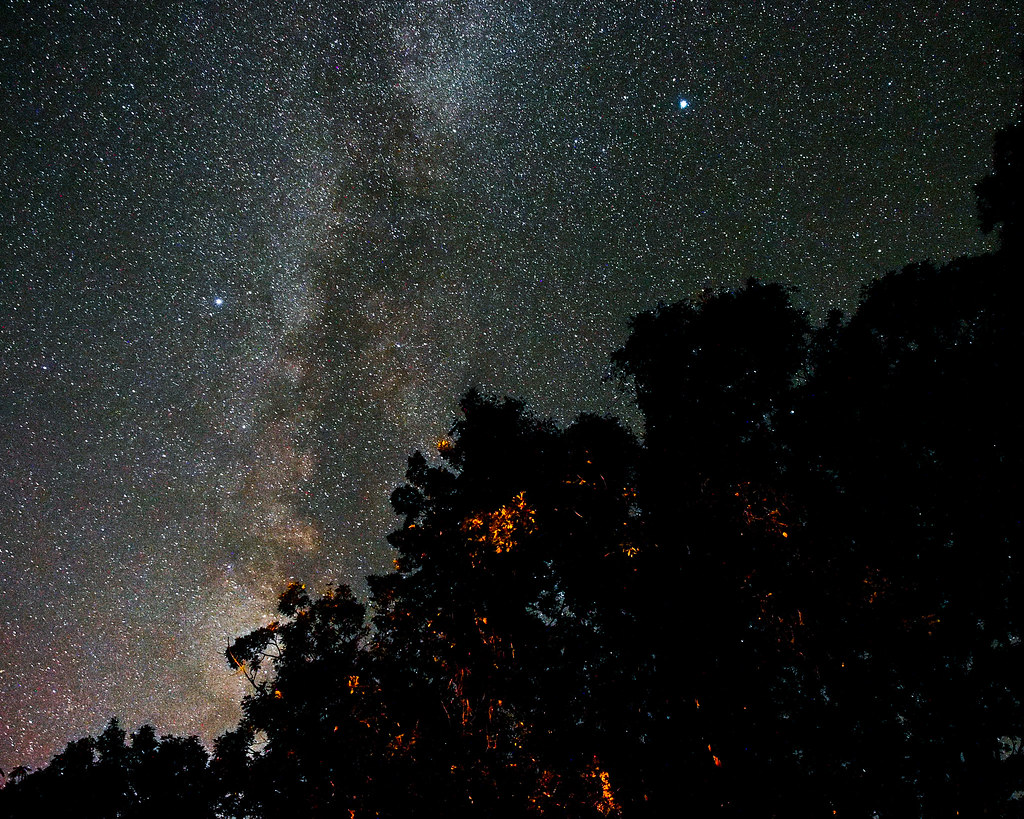 P9130487 by MrDespair, on Flickr P9130487 by MrDespair, on Flickr
|
|
|
|
There is an Orion Skyview 6" Deluxe EQ available on Craigslist in my area for $175. Comes with 9 and 30 mm eyepieces and a moon filter. Says it was slightly used about 8 years ago and back in its original box since. It looks like it's an older version of the Astroview 6, which is one of the scopes I've been thinking about getting, but I can't seem to find much in the way of reviews on it. Search results mostly just lead to the newer scopes. Does anyone here have experience with this scope? How does it compare to the newer models as far as optics and mount? It's $300 less than a new Astroview, which means I can get more accessories within my budget. I'm usually someone who would rather purchase something new so I know what I'm getting, but this just seems like a good deal. I've been seriously thinking about getting a telescope and doing some research and comparisons for a while now, just haven't quite convinced myself to pull the trigger on one yet. I had also been looking at the Spaceprobe 130 ST. One of my questions in looking at all this is if it's worth spending the extra nearly $200 to bump up to a 6" scope, either the Orion Astroview 6 or the Celestron Omni 150. I'm not really interested in a dob; I much prefer the idea of using an EQ mount, especially with being able to track something, even if manually. I'm not really thinking about astrophotography at this time, at least nothing more than what a point and shoot camera can do. I want something that can handle suburban skies, but also something portable enough I can take to dark sky locations. I also don't want something so heavy that it discourages me from actually taking it outside to use it. This the appeal of the 5" scope, but the 6" isn't that much heavier, just don't know if it's worth the extra cost. They all seem to have good reviews, especially as far as optics are concerned. Any advice would be greatly appreciated.
|
|
|
|
Hremsfeld posted:I'm not sure if this is the right thread to ask this in, but each star with confirmed exoplanets has to have an the approximate-plane its stars orbit on "pointing" towards us, right? As in, on a similar plane to the ecliptic? CombatInformatiker posted:I can't quite parse your question, but the orbital plane of exoplanets discovered by the transit method has to be oriented in such a way that a vector from Earth to their star lies in that plane; it is not required that Earth's orbital plane has the same orientation as the exoplanet's orbital plane. See also http://en.wikipedia.org/wiki/Exoplanet#Detection_methods. Crossposting a question from the spaceflight thread, it sounds like in order to detect an exoplanet, a line going straight off the star and through the exoplanet's Longitude of Ascending Node has to point at Earth; is that the case? In other words, the exoplanet has to have its orbit facing Earth edge-on, right?
|
|
|
|
Hremsfeld posted:Crossposting a question from the spaceflight thread, it sounds like in order to detect an exoplanet, a line going straight off the star and through the exoplanet's Longitude of Ascending Node has to point at Earth; is that the case? In other words, the exoplanet has to have its orbit facing Earth edge-on, right? An exoplanet doesn't have to pass between earth and it's star to be detected from earth but it helps. The Kepler mission relies on a transit(exoplanet passing directly between star and earth). Other methods of detecting exoplanets don't share that requirement.
|
|
|
|
Spaced God posted:Does anyone have tips for RegiStax 5.1? I have about 1400 frames of Saturn and I have no idea what to do with them other than fiddle with the sliders and such and pretend to know what I'm doing If you're not already doing so, I'd suggest doing your stacking in AutoStakkert!2 then consider doing some sharpening in Registax. AutoStakkert it a lot more straightforward than Registax and free as well. As far as Registax though, load your video and use the video slider to select the clearest frame possible and then put an alignment box around Saturn and do the align process. When you get to the point of sharpening with the sliders, I generally go a bit heavier on sliders 5 & 6 to bring out larger details and go lighter on sliders 1 & 2 for smaller details and don't really touch the others. It's more of a art than I science I feel. If you a link to your video footage PM me and I'll have a go at it to see what's possible.
|
|
|
|
Good to come across the thread. I live in an urban area and my skies are poo poo due to light pollution, reducing me to really only planetary and lunar observing. I've been trying to get into the planetary imaging for a couple of years now and have sunk a bit of coin into that without justifiable results, the problem being the seeing conditions are really disappointing where I live generally. Undaunted I recently decided to throw even more money into the money pit that is amateur astronomy and bough myself a dedicated solar scope, figuring that not only is the Sun around a lot more than things in the night sky, but it generally works well with my sleeping schedule (as in not interfering with it). After looking through a hydrogen alpha scope a couple of years ago for an eclipse I knew I needed one of those. Then I started looking at the prices on that and got really dissuaded, tho recently I was able to score some good kit for a few thousand off retail. I'm just getting into solar imaging and developing a processing workflow, but here's a very recent work in progress from yesterday's sun. Need to work on a couple of ares in my mosaic to hopefully sharpen things up, if the quality is there. Dunno.  ** Image linked to slightly version.
|
|
|
|

|
| # ? May 28, 2024 19:07 |
|
WhatsInaMojito posted:An exoplanet doesn't have to pass between earth and it's star to be detected from earth but it helps. The Kepler mission relies on a transit(exoplanet passing directly between star and earth). Other methods of detecting exoplanets don't share that requirement. Interesting, thanks! So how would they detect it if it doesn't transit across, then?
|
|
|






